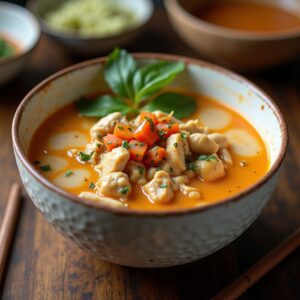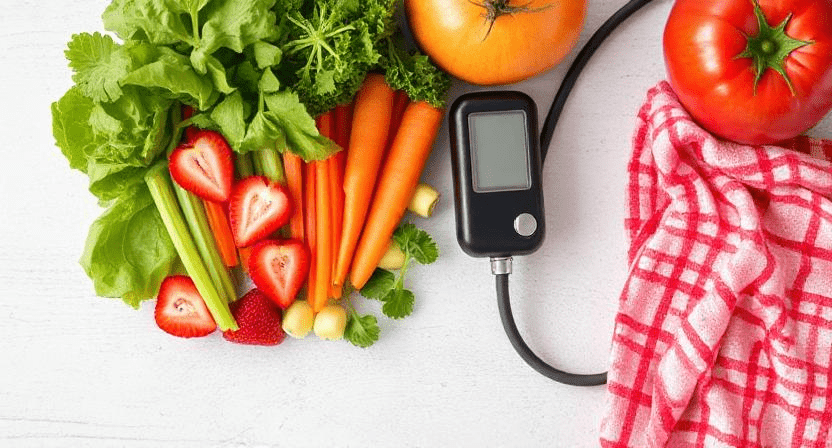

How an Anti-Inflammatory Diet Can Help with Blood Pressure


Arya Soleil
High blood pressure, or hypertension, is a widespread health concern affecting millions of people worldwide. It is often referred to as the “silent killer” because it may not exhibit noticeable symptoms yet can significantly increase the risk of heart disease, stroke, and kidney problems. While medication is commonly prescribed to control blood pressure, lifestyle and dietary changes can play a pivotal role in managing and even preventing hypertension. One of the most effective dietary strategies is adopting an anti-inflammatory diet. This approach to nutrition not only helps regulate blood pressure but also improves overall health by reducing inflammation, a key driver of cardiovascular disease.
Understanding the Link Between Inflammation and Blood Pressure
Inflammation is the body’s natural response to injury, infection, or harmful stimuli. While acute inflammation is beneficial for healing, chronic inflammation is a different story. Prolonged, low-grade inflammation is associated with various chronic diseases, including hypertension. Research suggests that chronic inflammation contributes to the stiffening of arteries, promoting the development of high blood pressure by increasing vascular resistance and impairing endothelial function (the ability of blood vessels to relax and contract efficiently).
The connection between inflammation and hypertension has been widely studied. Inflammatory markers such as C-reactive protein (CRP), interleukin-6 (IL-6), and tumor necrosis factor-alpha (TNF-α) have been found to correlate with elevated blood pressure. This suggests that reducing inflammation through diet and lifestyle changes could be an effective strategy for blood pressure management.
Components of an Anti-Inflammatory Diet
An anti-inflammatory diet is rich in whole, nutrient-dense foods that combat inflammation and support cardiovascular health. This dietary approach primarily includes fruits, vegetables, whole grains, healthy fats, and lean proteins while minimizing processed foods, sugar, and unhealthy fats. Below are the key components of an anti-inflammatory diet and how they can help regulate blood pressure.
1. Fruits and Vegetables
Fruits and vegetables are packed with antioxidants, vitamins, and minerals that help combat oxidative stress and inflammation. They are also excellent sources of potassium, a mineral essential for blood pressure regulation. Potassium helps balance sodium levels in the body, reducing tension in blood vessel walls and lowering blood pressure.
Some of the best anti-inflammatory fruits and vegetables include:
Berries (blueberries, strawberries, raspberries): Rich in flavonoids and anthocyanins, which have anti-inflammatory and blood pressure-lowering effects.
Leafy greens (spinach, kale, Swiss chard): High in potassium and nitrates, which help relax blood vessels and improve circulation.
Tomatoes: Contain lycopene, an antioxidant known to reduce inflammation and support heart health.
Beets: Rich in nitrates that help widen blood vessels, improving blood flow and reducing hypertension.
2. Whole Grains
Whole grains such as quinoa, brown rice, oats, and whole wheat contain fiber, vitamins, and antioxidants that help lower inflammation and support cardiovascular health. Studies show that consuming whole grains can help lower systolic and diastolic blood pressure by improving insulin sensitivity and reducing inflammation.
3. Healthy Fats
Not all fats are created equal. Healthy fats, particularly those found in olive oil, avocados, nuts, and fatty fish, have potent anti-inflammatory properties.
Olive oil: Contains polyphenols and monounsaturated fats that help reduce inflammation and support heart health.
Fatty fish (salmon, mackerel, sardines): High in omega-3 fatty acids, which reduce inflammation, improve endothelial function, and lower blood pressure.
Nuts and seeds (almonds, walnuts, flaxseeds, chia seeds): Provide healthy fats, fiber, and antioxidants that promote cardiovascular health.
4. Lean Proteins
Protein is essential for overall health, but the type of protein consumed matters. Opting for lean, anti-inflammatory protein sources can benefit blood pressure levels.
Legumes (lentils, beans, chickpeas): Rich in fiber and plant-based protein, they help lower blood pressure and reduce inflammation.
Skinless poultry: A good source of lean protein without the unhealthy fats found in red meat.
Plant-based proteins (tofu, tempeh): Offer protein without the inflammatory effects associated with processed or red meats.
5. Herbs and Spices
Certain herbs and spices have natural anti-inflammatory and blood pressure-lowering properties.
Garlic: Contains allicin, a compound known to help lower blood pressure by relaxing blood vessels.
Turmeric: Has curcumin, which is a powerful anti-inflammatory agent that supports heart health.
Ginger: Helps improve circulation and has anti-inflammatory benefits.
Cinnamon: Can help reduce blood pressure and improve blood sugar control.
Foods to Avoid for Reducing Inflammation and Hypertension
Just as important as incorporating anti-inflammatory foods into the diet is avoiding foods that promote inflammation and high blood pressure. Some of the worst offenders include:
Processed foods: High in trans fats, refined carbohydrates, and additives that increase inflammation.
Excess sugar: Leads to insulin resistance, weight gain, and higher blood pressure.
Refined carbohydrates: White bread, pasta, and pastries can spike blood sugar levels and contribute to inflammation.
Excessive salt intake: While sodium is necessary for the body, too much of it, especially from processed foods, can lead to hypertension.
Unhealthy fats: Trans fats and excessive saturated fats found in fast food and processed snacks increase inflammation and arterial stiffness.
Additional Lifestyle Changes to Complement an Anti-Inflammatory Diet
While diet is a critical factor in managing blood pressure and inflammation, incorporating other lifestyle changes can enhance its effectiveness.
Regular Exercise: Physical activity helps regulate blood pressure by improving circulation, reducing stress, and promoting weight management.
Stress Management: Chronic stress contributes to inflammation and hypertension. Practices like meditation, yoga, and deep breathing can help reduce stress and lower blood pressure.
Adequate Sleep: Poor sleep can increase inflammation and contribute to high blood pressure. Ensuring 7-9 hours of quality sleep per night is crucial for heart health.
Maintaining a Healthy Weight: Excess weight, especially around the abdomen, is associated with increased inflammation and higher blood pressure.
Hydration: Drinking enough water helps maintain blood volume and circulation, reducing strain on the heart.
Conclusion
An anti-inflammatory diet is a powerful tool for managing and preventing high blood pressure. By focusing on whole, nutrient-dense foods that reduce inflammation, individuals can naturally support their cardiovascular health and lower their risk of hypertension-related complications. Combined with regular exercise, stress management, and other healthy lifestyle choices, adopting an anti-inflammatory diet can lead to long-term improvements in overall well-being. Prioritizing these dietary and lifestyle changes can pave the way for a healthier heart and a longer life.
Recommended Reads

- March 22, 2025
Anti-Inflammatory Breakfasts: Easy Recipes to Start Your Day Right
Home News Healthy Habits & Lifestyle Health Conditions &...


- March 22, 2025
Questioning the FDA: A Deeper Look at the Food and Drug Administration’s Role
Home News Healthy Habits & Lifestyle Health Conditions &...


- March 22, 2025
Make ‘Raw Milk’ Just ‘Milk’ Again: A Closer Look at the Raw Milk Debate
Home News Healthy Habits & Lifestyle Health Conditions &...


- March 22, 2025
The Power of Sweet Potatoes: A Superfood for Eyes, Skin, and Beyond
Home News Healthy Habits & Lifestyle Health Conditions &...


- March 22, 2025
Sugar-Free: A Code Word for “We’ve Replaced It with Something Worse for You”
Home News Healthy Habits & Lifestyle Health Conditions &...


- March 22, 2025
The Evolution of Food: How Modern Diets Are Fueling Chronic Disease
Home News Healthy Habits & Lifestyle Health Conditions &...

How an Anti-Inflammatory Diet Can Help with Blood Pressure

High blood pressure, or hypertension, is a widespread health concern affecting millions of people worldwide. It is often referred to as the “silent killer” because it may not exhibit noticeable symptoms yet can significantly increase the risk of heart disease, stroke, and kidney problems. While medication is commonly prescribed to control blood pressure, lifestyle and dietary changes can play a pivotal role in managing and even preventing hypertension. One of the most effective dietary strategies is adopting an anti-inflammatory diet. This approach to nutrition not only helps regulate blood pressure but also improves overall health by reducing inflammation, a key driver of cardiovascular disease.
Understanding the Link Between Inflammation and Blood Pressure
Inflammation is the body’s natural response to injury, infection, or harmful stimuli. While acute inflammation is beneficial for healing, chronic inflammation is a different story. Prolonged, low-grade inflammation is associated with various chronic diseases, including hypertension. Research suggests that chronic inflammation contributes to the stiffening of arteries, promoting the development of high blood pressure by increasing vascular resistance and impairing endothelial function (the ability of blood vessels to relax and contract efficiently).
The connection between inflammation and hypertension has been widely studied. Inflammatory markers such as C-reactive protein (CRP), interleukin-6 (IL-6), and tumor necrosis factor-alpha (TNF-α) have been found to correlate with elevated blood pressure. This suggests that reducing inflammation through diet and lifestyle changes could be an effective strategy for blood pressure management.
Components of an Anti-Inflammatory Diet
An anti-inflammatory diet is rich in whole, nutrient-dense foods that combat inflammation and support cardiovascular health. This dietary approach primarily includes fruits, vegetables, whole grains, healthy fats, and lean proteins while minimizing processed foods, sugar, and unhealthy fats. Below are the key components of an anti-inflammatory diet and how they can help regulate blood pressure.
1. Fruits and Vegetables
Fruits and vegetables are packed with antioxidants, vitamins, and minerals that help combat oxidative stress and inflammation. They are also excellent sources of potassium, a mineral essential for blood pressure regulation. Potassium helps balance sodium levels in the body, reducing tension in blood vessel walls and lowering blood pressure.
Some of the best anti-inflammatory fruits and vegetables include:
Berries (blueberries, strawberries, raspberries): Rich in flavonoids and anthocyanins, which have anti-inflammatory and blood pressure-lowering effects.
Leafy greens (spinach, kale, Swiss chard): High in potassium and nitrates, which help relax blood vessels and improve circulation.
Tomatoes: Contain lycopene, an antioxidant known to reduce inflammation and support heart health.
Beets: Rich in nitrates that help widen blood vessels, improving blood flow and reducing hypertension.
2. Whole Grains
Whole grains such as quinoa, brown rice, oats, and whole wheat contain fiber, vitamins, and antioxidants that help lower inflammation and support cardiovascular health. Studies show that consuming whole grains can help lower systolic and diastolic blood pressure by improving insulin sensitivity and reducing inflammation.
3. Healthy Fats
Not all fats are created equal. Healthy fats, particularly those found in olive oil, avocados, nuts, and fatty fish, have potent anti-inflammatory properties.
Olive oil: Contains polyphenols and monounsaturated fats that help reduce inflammation and support heart health.
Fatty fish (salmon, mackerel, sardines): High in omega-3 fatty acids, which reduce inflammation, improve endothelial function, and lower blood pressure.
Nuts and seeds (almonds, walnuts, flaxseeds, chia seeds): Provide healthy fats, fiber, and antioxidants that promote cardiovascular health.
4. Lean Proteins
Protein is essential for overall health, but the type of protein consumed matters. Opting for lean, anti-inflammatory protein sources can benefit blood pressure levels.
Legumes (lentils, beans, chickpeas): Rich in fiber and plant-based protein, they help lower blood pressure and reduce inflammation.
Skinless poultry: A good source of lean protein without the unhealthy fats found in red meat.
Plant-based proteins (tofu, tempeh): Offer protein without the inflammatory effects associated with processed or red meats.
5. Herbs and Spices
Certain herbs and spices have natural anti-inflammatory and blood pressure-lowering properties.
Garlic: Contains allicin, a compound known to help lower blood pressure by relaxing blood vessels.
Turmeric: Has curcumin, which is a powerful anti-inflammatory agent that supports heart health.
Ginger: Helps improve circulation and has anti-inflammatory benefits.
Cinnamon: Can help reduce blood pressure and improve blood sugar control.
Foods to Avoid for Reducing Inflammation and Hypertension
Just as important as incorporating anti-inflammatory foods into the diet is avoiding foods that promote inflammation and high blood pressure. Some of the worst offenders include:
Processed foods: High in trans fats, refined carbohydrates, and additives that increase inflammation.
Excess sugar: Leads to insulin resistance, weight gain, and higher blood pressure.
Refined carbohydrates: White bread, pasta, and pastries can spike blood sugar levels and contribute to inflammation.
Excessive salt intake: While sodium is necessary for the body, too much of it, especially from processed foods, can lead to hypertension.
Unhealthy fats: Trans fats and excessive saturated fats found in fast food and processed snacks increase inflammation and arterial stiffness.
Additional Lifestyle Changes to Complement an Anti-Inflammatory Diet
While diet is a critical factor in managing blood pressure and inflammation, incorporating other lifestyle changes can enhance its effectiveness.
Regular Exercise: Physical activity helps regulate blood pressure by improving circulation, reducing stress, and promoting weight management.
Stress Management: Chronic stress contributes to inflammation and hypertension. Practices like meditation, yoga, and deep breathing can help reduce stress and lower blood pressure.
Adequate Sleep: Poor sleep can increase inflammation and contribute to high blood pressure. Ensuring 7-9 hours of quality sleep per night is crucial for heart health.
Maintaining a Healthy Weight: Excess weight, especially around the abdomen, is associated with increased inflammation and higher blood pressure.
Hydration: Drinking enough water helps maintain blood volume and circulation, reducing strain on the heart.
Conclusion
An anti-inflammatory diet is a powerful tool for managing and preventing high blood pressure. By focusing on whole, nutrient-dense foods that reduce inflammation, individuals can naturally support their cardiovascular health and lower their risk of hypertension-related complications. Combined with regular exercise, stress management, and other healthy lifestyle choices, adopting an anti-inflammatory diet can lead to long-term improvements in overall well-being. Prioritizing these dietary and lifestyle changes can pave the way for a healthier heart and a longer life.
Recommended Reads

- March 22, 2025
Anti-Inflammatory Breakfasts: Easy Recipes to Start Your Day Right
Home News Healthy Habits & Lifestyle Health Conditions &...


- March 22, 2025
Questioning the FDA: A Deeper Look at the Food and Drug Administration’s Role
Home News Healthy Habits & Lifestyle Health Conditions &...


- March 22, 2025
Make ‘Raw Milk’ Just ‘Milk’ Again: A Closer Look at the Raw Milk Debate
Home News Healthy Habits & Lifestyle Health Conditions &...


- March 22, 2025
The Power of Sweet Potatoes: A Superfood for Eyes, Skin, and Beyond
Home News Healthy Habits & Lifestyle Health Conditions &...


- March 22, 2025
Sugar-Free: A Code Word for “We’ve Replaced It with Something Worse for You”
Home News Healthy Habits & Lifestyle Health Conditions &...


- March 22, 2025
The Evolution of Food: How Modern Diets Are Fueling Chronic Disease
Home News Healthy Habits & Lifestyle Health Conditions &...



